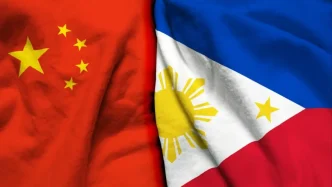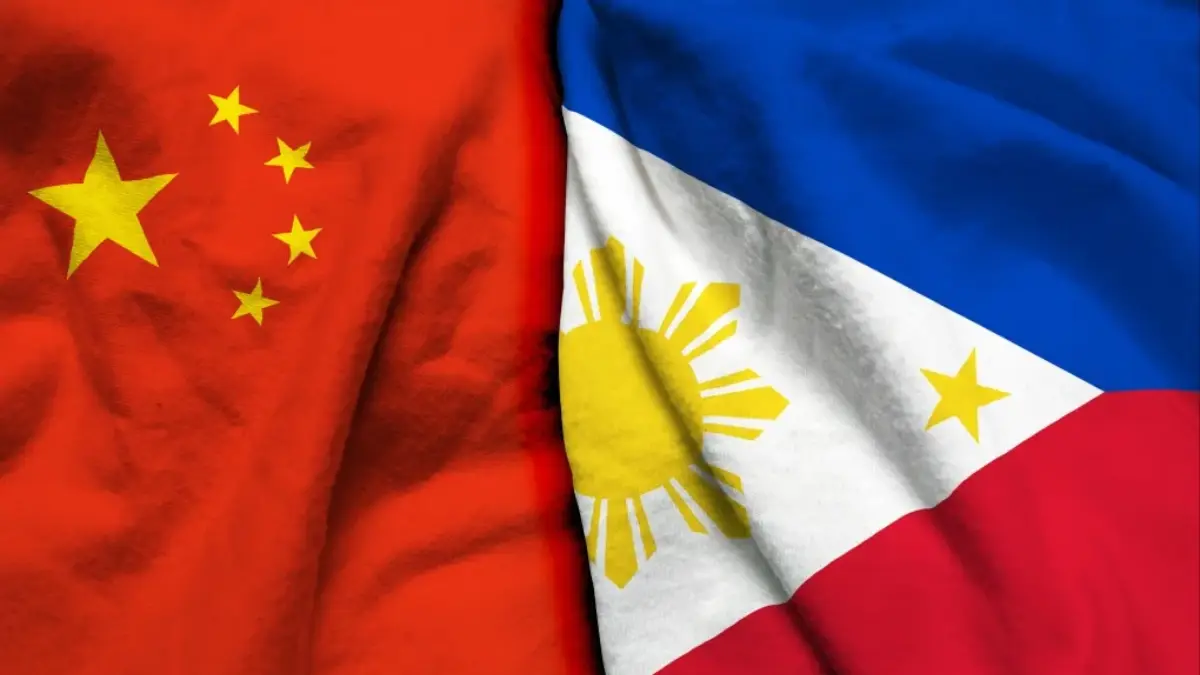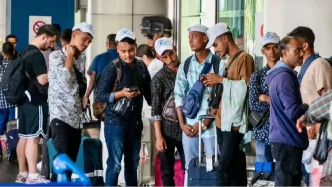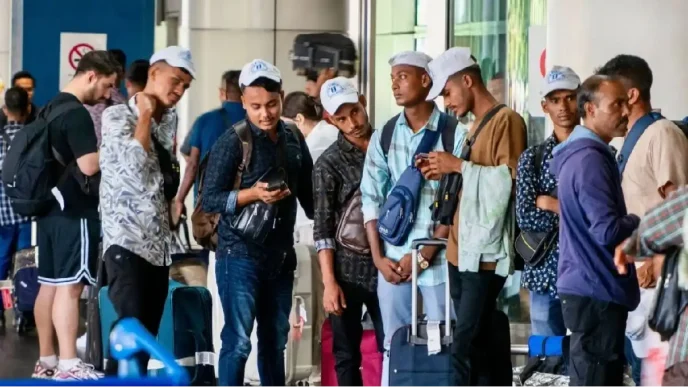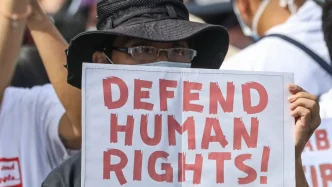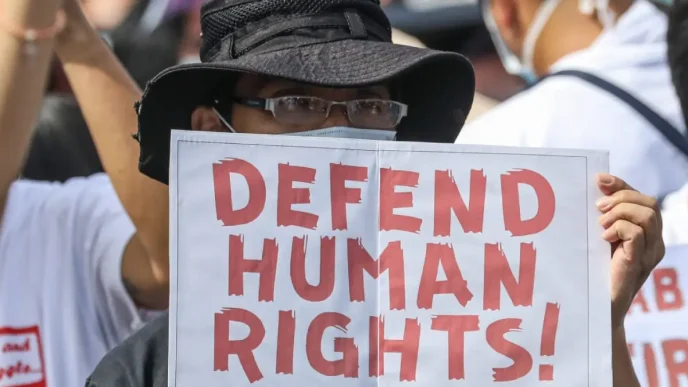Manila faces a new chapter of geopolitical strain as China imposes targeted sanctions on the Philippines, a move widely interpreted as a response to escalating disputes in the South China Sea. Announced in late 2023, these measures—primarily impacting trade and specific Filipino officials—underscore Beijing’s growing assertiveness in the region. Beyond immediate economic repercussions, the sanctions signal a broader warning to neighboring states navigating their own territorial and diplomatic challenges with China. As tensions simmer, the Philippines finds itself at the forefront of a delicate balancing act between asserting sovereignty and mitigating economic fallout.
A Retaliatory Move in the South China Sea Dispute
The latest round of sanctions from China targets key Filipino exports, including agricultural products like bananas and pineapples, which form a significant portion of the country’s trade with its northern neighbor. Additionally, travel restrictions and asset freezes have been imposed on select Philippine officials accused by Beijing of “provocative actions” in disputed maritime zones. While China has not explicitly detailed the triggers for these measures, analysts point to recent Philippine naval activities and strengthened military ties with the United States as likely catalysts.
The South China Sea remains a flashpoint, with overlapping claims from multiple nations, including Vietnam, Malaysia, and Brunei. For the Philippines, the disputed Scarborough Shoal and Spratly Islands are not just territorial concerns but symbols of national pride and resource security. China’s sweeping “nine-dash line” claim, which encompasses nearly 90% of the sea, has long been rejected by Manila and was deemed invalid by a 2016 international tribunal ruling—a decision Beijing refuses to recognize. The sanctions appear to be a direct response to the Philippines’ growing assertiveness, including joint military exercises with the U.S. and public denunciations of Chinese incursions into its exclusive economic zone (EEZ).
According to local reports, the economic impact is already being felt. Agricultural exporters, particularly in Mindanao, are grappling with halted shipments, with losses estimated at millions of dollars in the first weeks alone. Small-scale farmers, who rely heavily on the Chinese market, are among the hardest hit, raising concerns about rural livelihoods. Meanwhile, the travel bans and asset freezes on officials signal a personal dimension to China’s strategy, aiming to pressure individual decision-makers in Manila.
Economic Fallout and Domestic Reactions
The Philippines’ trade relationship with China is substantial, with Beijing accounting for a significant share of its export market. In 2022, bilateral trade was valued at over $30 billion, with agricultural goods and raw materials forming a critical component. The sanctions, though targeted, threaten to disrupt this delicate economic balance. Economists warn that prolonged restrictions could push inflation higher, particularly for imported goods, while exporters may struggle to pivot to alternative markets in the short term.
Public sentiment in the Philippines reflects a mix of defiance and concern. In Manila and other urban centers, protests have erupted, with citizens and activists calling for a stronger stance against Chinese aggression. Fisherfolk, whose livelihoods depend on access to contested waters, have been vocal about the need for government protection against Chinese coast guard vessels, which have repeatedly blocked their access to traditional fishing grounds. Yet, there is also apprehension about the economic cost of confrontation, with business leaders urging caution to avoid a full-blown trade war.
The administration of President Ferdinand Marcos Jr. has so far adopted a measured tone, emphasizing diplomacy while reaffirming the country’s commitment to defending its sovereignty. Unlike his predecessor, Rodrigo Duterte, who sought closer ties with Beijing, Marcos has pivoted toward strengthening alliances with Western powers, particularly the United States. This shift, while bolstering Manila’s international standing, has clearly irked China, with state media accusing the Philippines of acting as a “pawn” in Washington’s regional strategy.
Regional Implications and China’s Broader Strategy
China’s sanctions on the Philippines are not an isolated act but part of a broader pattern of economic coercion in the region. Over the past decade, Beijing has deployed similar tactics against countries like Australia and South Korea, using trade as a lever to punish perceived slights or policy missteps. In Southeast Asia, where economic dependence on China is often high, such measures carry significant weight, serving as a warning to other nations with maritime disputes.
For ASEAN (Association of Southeast Asian Nations), the sanctions highlight the challenges of maintaining unity in the face of China’s divide-and-conquer approach. While some member states, like Cambodia and Laos, maintain close ties with Beijing, others, including Vietnam and Indonesia, share the Philippines’ concerns over maritime encroachment. The lack of a cohesive regional response has allowed China to address disputes bilaterally, often to the disadvantage of smaller nations. Analysts suggest that Manila’s experience may prompt greater coordination among ASEAN members, though longstanding divisions over how to engage China remain a hurdle.
Beyond Southeast Asia, the sanctions resonate as a test of the international community’s resolve. The United States, which has a mutual defense treaty with the Philippines, has condemned China’s actions, with officials pledging support for Manila’s maritime rights. Joint military drills, such as the annual Balikatan exercises, have taken on added significance, signaling a deepening security partnership. However, Washington’s ability to influence Beijing’s behavior remains limited, particularly as economic ties between the U.S. and China complicate any push for broader sanctions or countermeasures.
The Philippines’ Balancing Act
For Manila, the path forward is fraught with complexity. On one hand, asserting sovereignty in the South China Sea is non-negotiable for both political and economic reasons—access to fishing grounds and potential energy reserves in the disputed areas is critical for national development. On the other hand, antagonizing China risks further economic penalties, a prospect that could undermine domestic stability at a time when the country is still recovering from the impacts of the COVID-19 pandemic.
Diplomatic efforts are underway, with Foreign Affairs Secretary Enrique Manalo engaging in talks with Chinese counterparts to de-escalate tensions. Yet, past negotiations, such as those surrounding a proposed Code of Conduct for the South China Sea, have yielded little progress, bogged down by disagreements over enforcement and scope. In the meantime, the Philippines is exploring ways to diversify its trade partners, looking to markets in Europe, Japan, and South Korea to offset potential losses from China’s sanctions.
Domestically, the government faces pressure to deliver tangible support to affected sectors. Emergency aid packages for farmers and fisherfolk are under consideration, though funding constraints and bureaucratic inefficiencies pose challenges. Marcos has also signaled an intent to bolster naval capabilities, with plans to acquire additional patrol vessels and enhance surveillance in contested waters—a move likely to further strain relations with Beijing.
A Signal Beyond Borders
China’s sanctions on the Philippines are more than a bilateral spat; they are a message to the region and the world about the costs of challenging Beijing’s ambitions. For smaller nations, the episode underscores the risks of economic interdependence with a superpower willing to weaponize trade. It also raises questions about the effectiveness of international law and multilateral frameworks in addressing disputes with a player as dominant as China.
As the Philippines navigates this crisis, its choices will likely influence how other Southeast Asian nations position themselves in the South China Sea saga. Will defiance inspire a united front, or will economic pragmatism prevail, pushing countries to acquiesce to Beijing’s demands? For now, Manila stands at a crossroads, its response shaping not only its own future but the geopolitical landscape of the region.
With tensions showing no signs of abating, the coming months will test the resilience of the Philippines’ economy and the resolve of its leadership. How the country balances sovereignty with survival remains an open question, one that could redefine its role in an increasingly contested part of the world.

